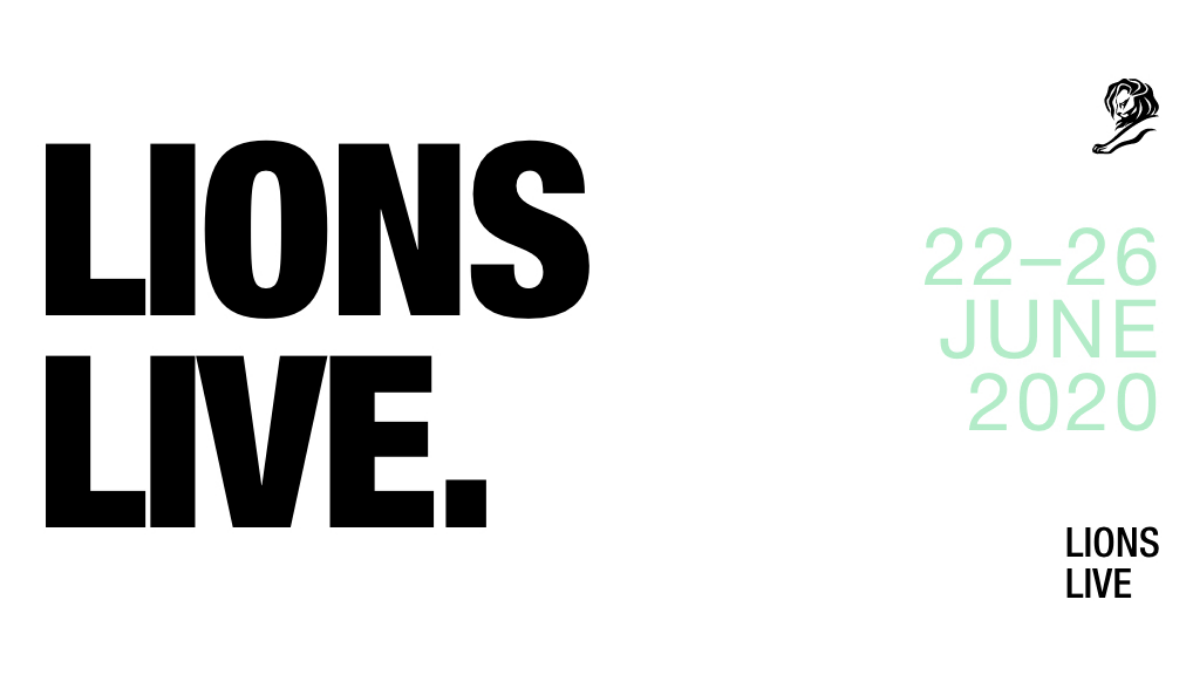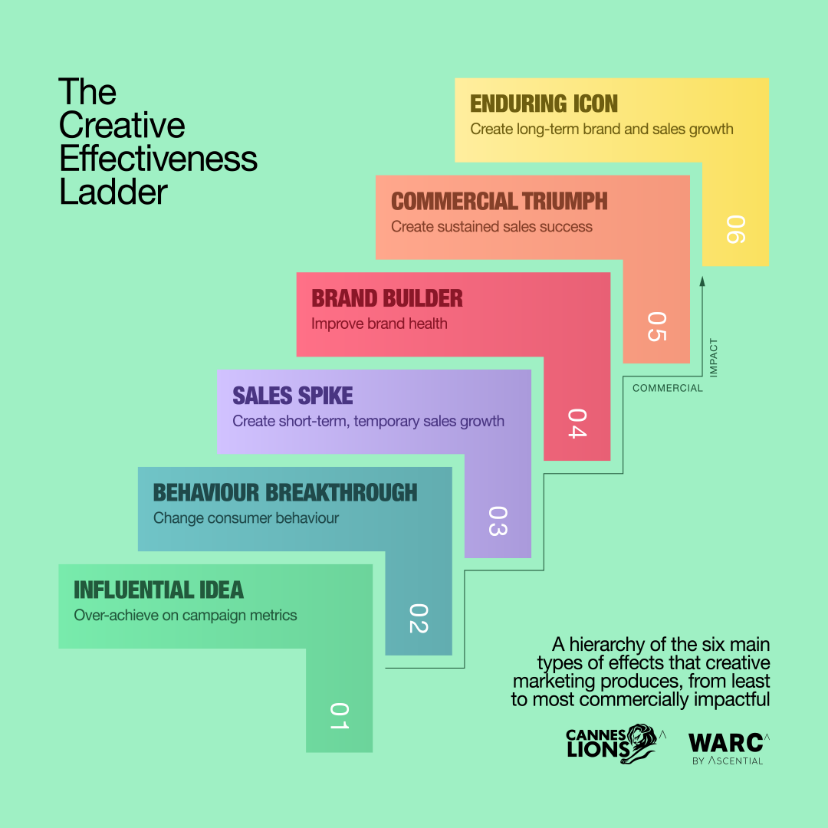Get analysis, insight & opinions from the world's top marketers.
Sign up to our newsletter.
In the absence of the annual industry meetup on the French Riviera, in June WFA asked seven industry experts: “If you were at Cannes Lions this year, what one big question would you put to the industry?” In this follow-up piece, Cannes Lions offers some answers based on the discussions at LIONS Live – their new media platform for people to experience creativity wherever they are.

In their “Brand in the Boardroom: How to Innovate with Purpose” session, R/GA unpacked the role of active purpose and branding in guiding and scaling corporate innovation efforts to build a health and sustainability movement.
Focusing the session on Evolved by Nature, a new green chemistry company with a vision for a future without micro-plastics, R/GA’s global head of brand, Mike Rigby, talked about the intrinsic link between brand and innovation and how brand strategy should be used to make better decisions. The key takeaways were:
Project Everyone co-founder and UN Sustainable Development Goals (SDGs) advocate Richard Curtis addressed the audience on the SDGs, saying, “They’re a road map, they’re a blueprint and they are the most inclusive plan that every country has fed into and actually committed to that we can use really effectively right now. Millions of organisations, activists and people believe in these goals, the question is how can we make them more famous and how can we use them to maximum effect.”
Curtis focused on the power of the collective voice, the power of activism and the power of individual actions to change the world, adding that “marketers and advertisers have always been at the frontline of changing behaviours so it feels like together, activists and then advertisers acting as activists can achieve really great things.”
In ‘What I’ve Learnt About Injustice, Inclusion, and Inspiration Amidst Two Pandemics’, Monique Nelson, the chair and CEP of UWG, the longest-standing multicultural marketing and advertising agency in the US, said: “Complex problems need diversity to answer them, that means you need a little bit of everyone to come up with the best solution. That is the same when it comes to being creative (…) Why would we limit the inputs when we’re looking for such a tremendous output?”
Echoing this thinking, Phumzile Mlambo-Ngcuka, United Nations Under-Secretary-General and Executive Director of UN Women, said in an interview with WFA CEO, Stephan Loerke: “It’s important that we look at the composition of the people we have in our organisations and aim to get change.” Ms Mlambo-Ngcuka added that if she were to write a letter to white people and men she would say: “Do not waste your privilege in society, use it for the collective good.”
In ‘Your Instagram Posts Won’t Save Lives. DO SOMETHING DAMMIT!!’, Benjamin Crump, civil rights attorney and activist, NFL player and activist, Malcolm Jenkins, Jabari Paul, the head of social activism at Ben & Jerry’s, and scholar and public philosopher, David Kyuman Kim, explored the systems of racial injustice that have led to the Black Lives Matter movement and what brands should do to raise their corporate fists in solidarity.
The audience were encouraged to commit to three steps:
Brands were also urged to consider if their customers see themselves in their hiring, practices and in the things they sell.
In ‘Cracking the Effectiveness Code’, James Hurman and Peter Field announced the release of The Creative Effectiveness Ladder, a framework for the six main types of effects produced by creative marketing. This was in response to a 2019 study, which revealed that the industry lacked a ‘universal definition’ and ‘shared language’ of effectiveness.
A subsequent analysis and comparison of close to 5,000 effectiveness award entrants and winners from 2011-2019 uncovered a new principle of effectiveness. Hurman and Field discovered that marketing effectiveness is heavily influenced by a campaign’s ‘creative commitment’, a composite measure of media budget, duration and number of media channels applied.
One output of The Effectiveness Code is the development of The Creative Effectiveness Ladder, a framework to evaluate the progress of effective marketing. It provides a universal definition and shared language for effectiveness and has been designed to be used as a continuous improvement tool for marketers and agencies, enabling them to produce more consistently highly effective creative campaigns and initiatives.
The Ladder outlines six main levels of effectiveness achievement, from least (level 1) to most commercially impactful (level 6):

Simon Cook, the MD of Cannes Lions, interviewed a selection of the 2021 Jury Presidents. The conversations touched on how each of the President’s awards categories will evolve in response to the changes in the wider world at present and what work they hope to award.
Simon opened each briefing with the same question: “Can you tell us about the briefing you would have given to your jury if the festival had gone ahead this year?”
Richard Brim, Chief Creative Officer, adam&eveDDB, UK answered: “A simple three-step criteria: Does this work stop you? Does this piece of work cut through the overload of content being produced? Do you want to continue watching the work and does it stay with you?
Luiz Sanchez, Chairman, CCO & Partner, AlmapBBDO, Brazil, answered: “It is fair enough to change what we are looking for because of the world change. Now more than ever, we are missing human connection and outdoor advertisement provides a platform to address this. Creatives should be taking local insight and leveraging it to a global perspective. We now have to make our ideas travel. We should also focus on human insight and the forms of creativity that really inspire people and ignite conversations.”
Ronald Ng, Global Chief Creative Officer, Isobar Global believes that business transformation is the change of the status quo. His jury will need to ask, “Does this un-status quo everything?” What is the positive effect on people’s lives? What do people seek from the brands?” He went on to say; “The work we want to award next year will be examples of revolutionary transformation and the un-making of the status quo.”
A common belief felt by all of the Presidents was that creativity and the work awarded at the Festival should reflect the state of the world we currently live in.
Ann Mukherjee, Chairwoman, CEO, Pernod Ricard NA, stated that “great brands speak to the human condition. The work produced by them should mimic the time, the culture and society it was created under. Great creativity is the stories being told in very timely ways.”
She added that the brands that walk away from their story to capture a short-term ROI, chase a trend or shy away from a societal issue face being in trouble. Every brand should have a “WHY” it exists. Her jury must reward work that reflects what society is. They must also be conscious to review work with a global lens and avoid a western bias. Importantly, her jury will be thoughtful towards truly understanding the global contexts of the work.
Susan Credle, Global Chief Creative Officer, FCB Global, believed in honouring the brands that have really mattered and helped make a difference in these challenging times. She and her jury will consider if the brands, agencies, etc behind the work “showed up” and helped up to make progress day to day.